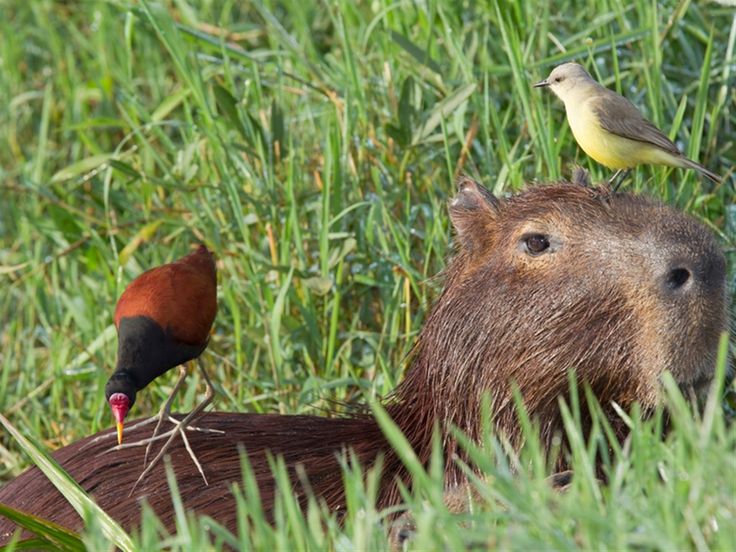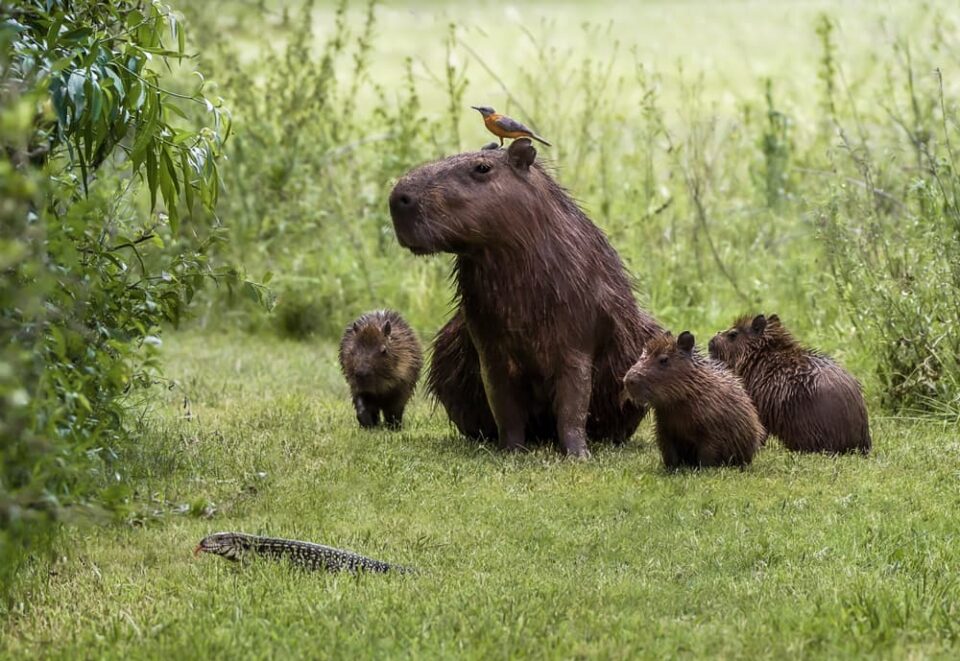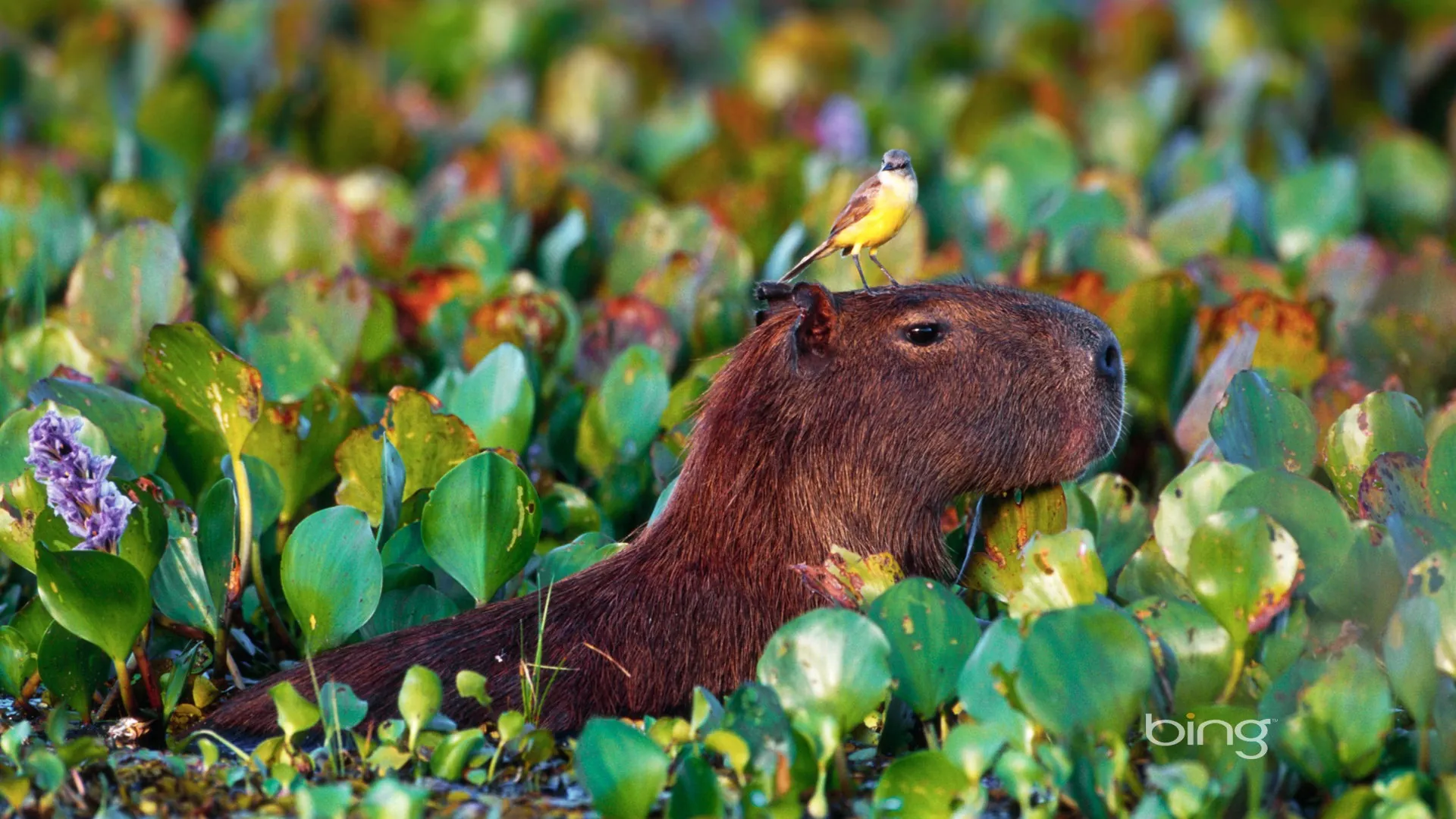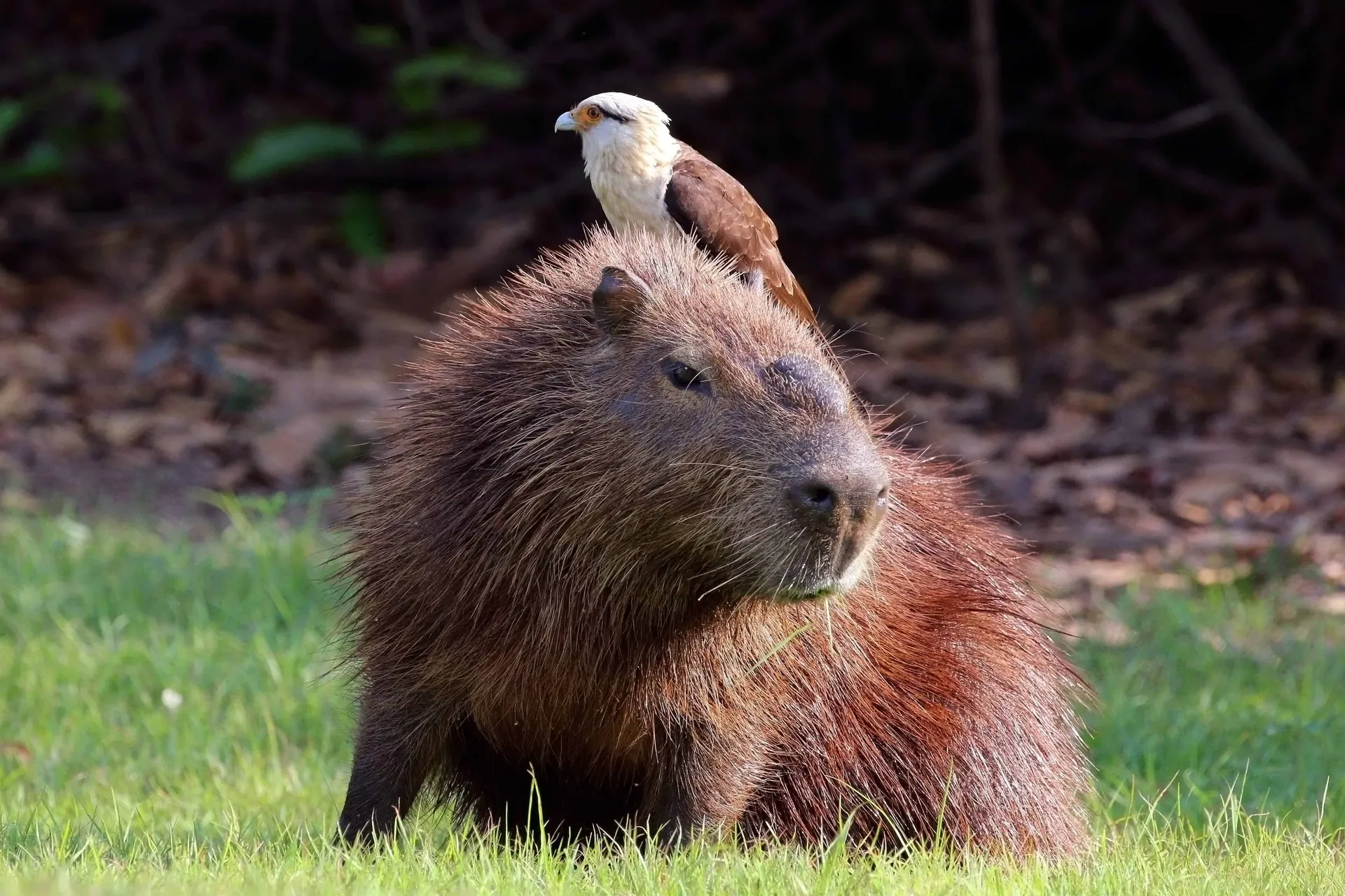Have you ever wondered why capybaras, the world’s largest rodents, are often seen with birds perched on their backs? It’s not just a quirky animal moment—it’s a fascinating example of nature’s interconnectedness. In this article, we’ll dive into the birds that sit on capybaras, the mutual benefits of this relationship, and why these gentle giants are the ultimate hosts in the animal kingdom.
Why Do Birds Sit on Capybaras?

Capybaras are like the Airbnb of the animal world—everyone wants to hang out with them! But why do birds, in particular, love perching on these semi-aquatic mammals?
- Free Pest Control: Birds like the yellow-headed caracara and cattle egret feast on ticks, parasites, and insects found on capybaras’ fur. It’s a win-win: the birds get a meal, and the capybaras get a grooming session.
- A Safe Vantage Point: Sitting on a capybara gives birds a higher vantage point to spot predators or food sources, like insects in the water.
- Capybaras’ Chill Vibes: These rodents are famously calm and tolerant, making them the perfect hosts for birds looking for a safe spot to rest.
Birds That Love Hitching a Ride on Capybaras

Not all birds are into the capybara lifestyle, but some species are regular visitors. Here’s a list of the most common birds that sit on capybaras:
1. Yellow-Headed Caracara
- Role: These birds are like nature’s pest control experts. They pick off ticks and botfly larvae from capybaras’ fur.
- Fun Fact: They’re so good at their job that capybaras often seem to enjoy the grooming session.
2. Cattle Egret
- Role: These birds follow capybaras as they graze, snatching up insects disturbed by their movement.
- Fun Fact: Cattle egrets are also known to hang out with other large mammals, like cows and buffaloes.
3. Wattled Jacana
- Role: These birds are often seen perched on capybaras, picking off parasites and enjoying the elevated view.
- Fun Fact: Wattled jacanas are known for their long toes, which help them walk on floating vegetation.
4. Black Vulture
- Role: While primarily scavengers, black vultures have been observed cleaning debris and parasites from capybaras’ fur.
- Fun Fact: They’re not just cleaners—they also act as sentinels, alerting capybaras to potential threats.
5. Smooth-Billed Ani
- Role: These birds are part of the cleaning crew, picking off ticks and other pests from capybaras.
- Fun Fact: Smooth-billed anis are highly social birds, often seen in groups.
The Mutual Benefits of This Unique Relationship
The relationship between capybaras and birds isn’t just cute—it’s a textbook example of mutualism, where both parties benefit.
For Birds:
- Food Source: Ticks, parasites, and insects on capybaras provide a steady meal.
- Safety: Perching on a capybara offers protection from ground predators.
- Mobility: Capybaras’ movement through water and grass helps birds access hard-to-reach food sources.
For Capybaras:
- Pest Control: Birds help keep their fur clean and free of parasites.
- Companionship: Capybaras are social animals, and the presence of birds adds to their communal lifestyle.
- Early Warning System: Birds can alert capybaras to approaching predators.
Why Capybaras Are the Perfect Hosts

Capybaras’ calm demeanor and social nature make them ideal for these interspecies friendships. Here’s what sets them apart:
- Tolerance: Capybaras rarely show aggression, even when birds are pecking at their fur.
- Size Advantage: Their large bodies provide ample space for birds to perch.
- Semi-Aquatic Lifestyle: Living near water means capybaras are often surrounded by birds, creating opportunities for these interactions.
FAQs About Birds Sitting on Capybaras
1. Do capybaras mind having birds on their backs?
Not at all! Capybaras are known for their tolerant nature and seem to enjoy the companionship and pest control that birds provide.
2. What happens if a bird hurts a capybara?
While rare, some birds might accidentally scratch a capybara’s skin. However, capybaras’ thick fur usually protects them from minor irritations.
3. Are there any risks to capybaras from these interactions?
Generally, no. The relationship is mutually beneficial, though larger or more aggressive birds could pose a slight risk.
4. Do capybaras interact with other animals besides birds?
Yes! Capybaras are known to coexist with monkeys, turtles, and even crocodiles, showcasing their adaptable and friendly nature.
The Bigger Picture: Capybaras and Ecosystem Health

Capybaras aren’t just chill hosts—they’re also ecosystem engineers. Their grazing habits help maintain plant balance, and their interactions with birds and other animals promote biodiversity.
However, threats like habitat loss and hunting can disrupt these relationships. Protecting capybaras and their habitats ensures that these unique interspecies bonds continue to thrive.
Final Thoughts
The sight of birds sitting on capybaras is more than just a cute photo op—it’s a testament to the beauty of nature’s interconnectedness. From pest control to companionship, this relationship highlights how even the most unlikely pairs can thrive together.
So, the next time you see a capybara with a bird on its back, remember: it’s not just a random encounter. It’s a symbiotic partnership that keeps both species happy and healthy.
Keywords: birds that sit on capybaras, capybara and bird relationship, mutualism in nature, yellow-headed caracara, cattle egret, wattled jacana, black vulture, smooth-billed ani, capybara ecosystem, symbiotic relationships.
LSI Keywords: capybara behavior, bird and rodent interactions, pest control in animals, semi-aquatic mammals, wildlife coexistence, animal mutualism, capybara adaptations, bird perch habits, capybara social nature.
